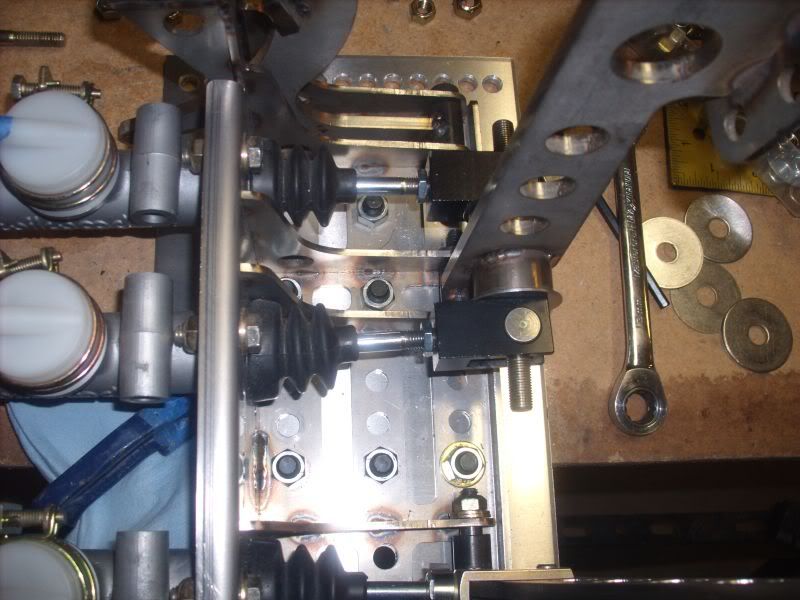The balance bar has defeated me for today.
i removed the washers except for 1 and ended up with this - it's similar to the photo of the car Craig built, so I'm on the right track
the problem is the outer balance bar is very crooked - but before you say it's right when it looks wrong, i almost need vice grips in order to spin the rod forwards/backwards. That can't be right.
I put my washers back and I can freely spin both bars by hand .... according to the Wilwood manual, it's acceptable for the balance bar to be crooked; it is NOT acceptable for the push rods to be crooked, so be definition I need to use the washers to make sure the rods are going straight into the master cylinders?
But on another note I got my pedal box mounted in today. Dave's velcro trick did the job and kept it held solid while I tested out the clutch pedal to find the right place for the assembly (I'm kind of surprised it worked - i would have expected the force of pushing the clutch pedal to cause it to move around, but it didn't) ... thanks Dave. :thumbsup:




